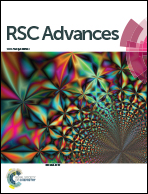Facile synthesis of bismuth oxide/bismuth vanadate heterostructures for efficient photoelectrochemical cells†
Abstract
Herein, we report a facile approach to synthesize Bi2O3/BiVO4 heterostructures for photoelectrochemical (PEC) cells. Due to the fast separation of the electron–hole pairs as a result of the p–n junction, the Bi2O3/BiVO4 heterostructures achieved a remarkable photocurrent of 2.58 mA cm−2 at 1.2 V vs. Ag/AgCl, which is about 5 times that of the pristine BiVO4.


 Please wait while we load your content...
Please wait while we load your content...